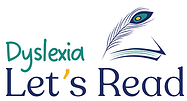top of page

Dyslexia
Myths vs. Facts
Dyslexia is one of the most misunderstood learning differences. Let’s clear up the biggest myths with real facts based on science.
-
Myth : Dyslexia is when kids write their b’s and d’s backward.
Fact: Letter reversals are common in all children up to second grade and are not a sign of dyslexia. Dyslexia is a language-processing difference, not just a difficulty with letter direction.
-
Myth : Only boys have dyslexia.
Fact: Boys and girls have dyslexia at about the same rate. Boys just get diagnosed more often because their struggles are easier to notice.
-
Myth : Dyslexia means you can’t read at all.
Fact: People with dyslexia can read, but it takes more effort and time. The right teaching methods help them improve.
-
Myth : Dyslexia means someone isn’t smart.
Fact: Dyslexia has nothing to do with intelligence. Many people with dyslexia are brilliant thinkers and excel in creativity, problem-solving, and leadership.
-
Myth : Kids will "outgrow" dyslexia.
Fact: Dyslexia doesn’t go away, but with the right support, people with dyslexia can learn strategies to become strong readers and writers.
-
Myth : Phonics alone can "fix" dyslexia
Fact: Phonics helps, but kids with dyslexia need more than just phonics—like hands-on learning, repetition, and multi-sensory teaching methods.
-
Myth : Dyslexia happens because parents don’t read enough to their kids.
Fact: Dyslexia is neurological, meaning it’s how the brain is wired. Reading with kids is great, but it does not cause or cure dyslexia.
Why This Matters
By understanding these facts, we can better support kids and adults with dyslexia. The more we bust myths, the easier it is to create a learning environment where everyone shines
bottom of page